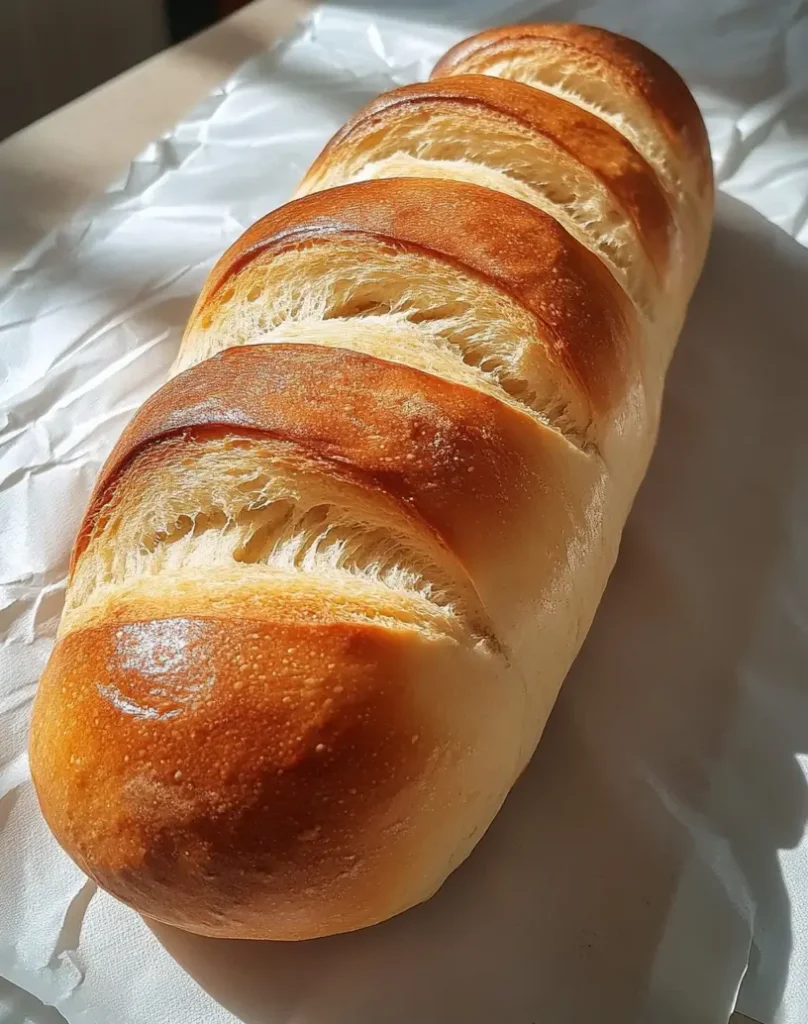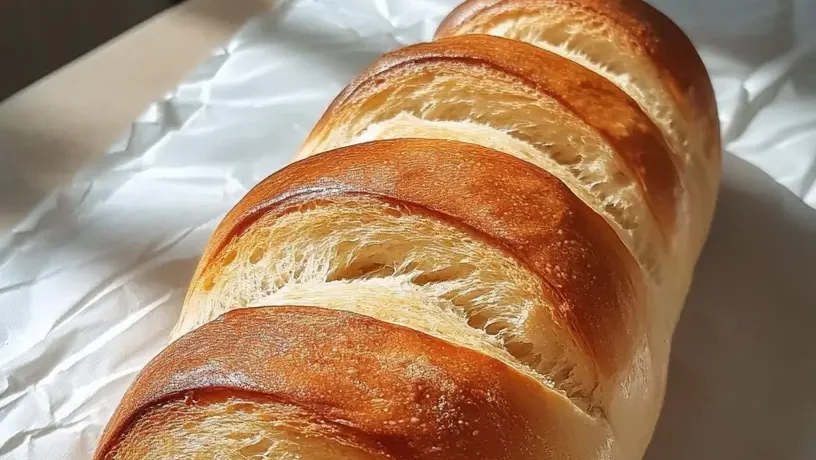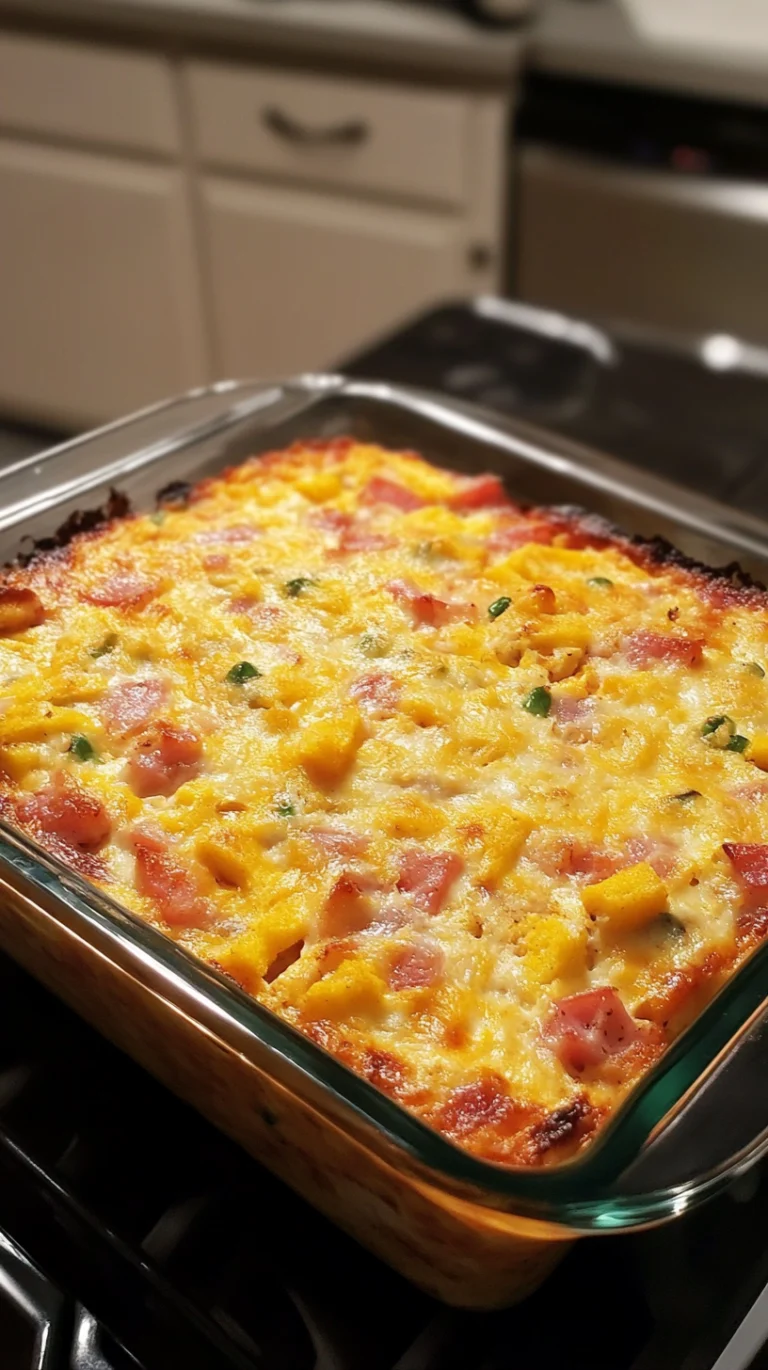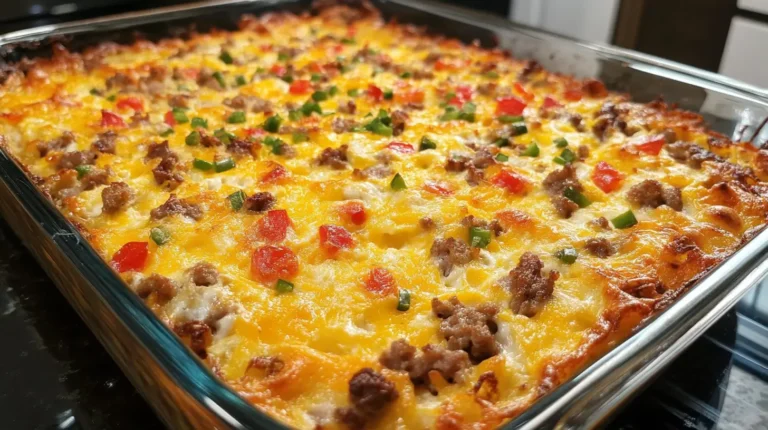French Bread: 4 Easy Steps to Bake the Perfect Loaf at Home
French bread is one of the most versatile breads you can bake. Its crusty exterior and soft, fluffy interior make it the ideal companion to soups, stews, or even as a base for sandwiches. In this detailed guide, we’ll walk you through the process of creating bakery-quality homemade French bread right in your kitchen.

Table of Contents
Why Make French Bread at Home?
Making French bread at home is an enjoyable and rewarding experience. Here’s why you should try it:
- Freshness: There’s nothing quite like the aroma and taste of bread fresh from the oven.
- Customization: Adjust the ingredients to match your preferences, dietary needs, or creative impulses.
- Cost Savings: A homemade loaf is not only affordable but free of preservatives and unnecessary additives.
Ingredients You’ll Need
Here’s what you’ll need to make two loaves of French bread:
- 2 ¼ cups warm water (110–115°F) – for activating the yeast.
- 1 tablespoon instant or active dry yeast – the foundation of any good bread.
- 2 tablespoons granulated sugar – to feed the yeast.
- 2 ¼ teaspoons salt – enhances the bread’s flavor.
- 2 tablespoons olive oil (optional) – adds softness to the dough.
- 5 ½ to 6 cups bread flour – bread flour creates a chewy, airy texture, but all-purpose flour can also work.
Tip: Using warm water ensures the yeast activates properly, but water that’s too hot can kill the yeast.
Step-by-Step French Bread Recipe
1. Mixing the Dough
- In a large mixing bowl, combine the warm water, sugar, and yeast. Let the mixture sit for 3–5 minutes, or until it begins to foam.
- Add salt, oil (if using), and 3 cups of the flour. Mix until smooth.
- Gradually add the remaining flour, ½ cup at a time, until the dough pulls away from the sides of the bowl.
- Knead the dough on a floured surface or in a stand mixer fitted with a dough hook for 8–10 minutes, until it becomes smooth and elastic.
Pro Tip: The dough should be slightly tacky but not sticky. If it feels too wet, add a tablespoon of flour at a time until the right consistency is achieved.
2. Letting the Dough Rise
Allowing the dough to rise properly is essential for light, airy bread. Choose one of the following methods:
- Traditional Method: Transfer the dough to a lightly greased bowl, cover with plastic wrap or a damp towel, and let it rise in a warm area for 1–1.5 hours until doubled in size.
- Quick Rise Method: Leave the dough in the mixing bowl, cover, and let it rest for 10 minutes. Stir down, then repeat this process 5–6 times.
If your dough doesn’t rise well, check your yeast’s expiration date or ensure your kitchen isn’t too cold.
3. Shaping the Loaves
Once the dough has doubled in size, it’s time to shape your bread:
- Punch down the dough and divide it into two equal portions.
- Roll each portion into a rectangle, about 9×13 inches. Starting with the long side, roll the dough tightly into a log.
- Pinch the seams to seal and tuck the ends under to create uniform loaves.
Use a French bread pan (available on Amazon) or a baking sheet lined with parchment paper for perfectly shaped loaves.
4. Scoring and Baking
Scoring allows the bread to expand while baking, creating its characteristic look.
- Use a bread lame or a sharp knife to make 3–4 diagonal slashes across the top of each loaf.
- Preheat your oven to 375°F. To create a crusty exterior, toss 3–4 ice cubes onto the oven floor before baking.
- Bake the loaves for 25–30 minutes, or until golden brown. The bread is done when it sounds hollow when tapped on the bottom or reaches an internal temperature of 190–200°F.
Pro Tip: If you don’t have a bread lame, a very sharp kitchen knife will work, but be sure to make quick, decisive cuts to avoid deflating the dough.

Customizing Your French Bread
The beauty of homemade bread is that you can customize it to your liking. Here are a few ideas:
- Whole Wheat Variation: Substitute half the bread flour with white whole wheat flour for a nuttier flavor.
- Herbs and Spices: Add rosemary, thyme, or garlic powder to the dough for an aromatic twist.
- Toppings: Before baking, brush the loaves with water and sprinkle sesame seeds, poppy seeds, or grated Parmesan cheese.
For more creative bread ideas, try this delicious Lemon Blueberry Bread.
Troubleshooting Common Issues
Even seasoned bakers run into problems. Here’s how to address them:
- Flat Loaves: This could be due to over-proofing. Avoid letting the dough rise too long.
- Dense Bread: Ensure the dough is kneaded long enough to develop the gluten.
- Uneven Baking: Check your oven’s temperature with a thermometer, as built-in settings are often inaccurate.
FAQs About French Bread
Can I Make French Bread Without a Stand Mixer?
Yes! Knead the dough by hand for about 10 minutes. It’s a bit more effort but equally rewarding.
How Can I Achieve a Crustier Loaf?
- Use the steam method by tossing ice cubes into the oven.
- Increase the baking temperature to 400°F for a deeper golden crust.
Can I Freeze French Bread Dough?
Yes, shape the dough into loaves after the first rise, then freeze. Let it thaw in the refrigerator overnight and bake as usual.
Serving and Storing French Bread
- Serving Suggestions: Pair your French bread with soups, stews, or dips. It’s also perfect for sandwiches or as a base for French bread pizza. Try it with this flavorful Garlic Parmesan Chicken.
- Storage: Keep leftovers in an airtight container for up to 3 days. To extend shelf life, freeze the bread in slices and reheat as needed.
Conclusion
Making French bread at home is a simple yet satisfying experience. With just a few ingredients and the right techniques, you can create loaves that rival any bakery. Ready to expand your bread-making repertoire? Check out this unique Italian Puff Bread for more inspiration!
Baking French bread is a skill worth mastering—it’s time to roll up your sleeves and start baking. Bon appétit!
There are no reviews yet. Be the first one to write one.







